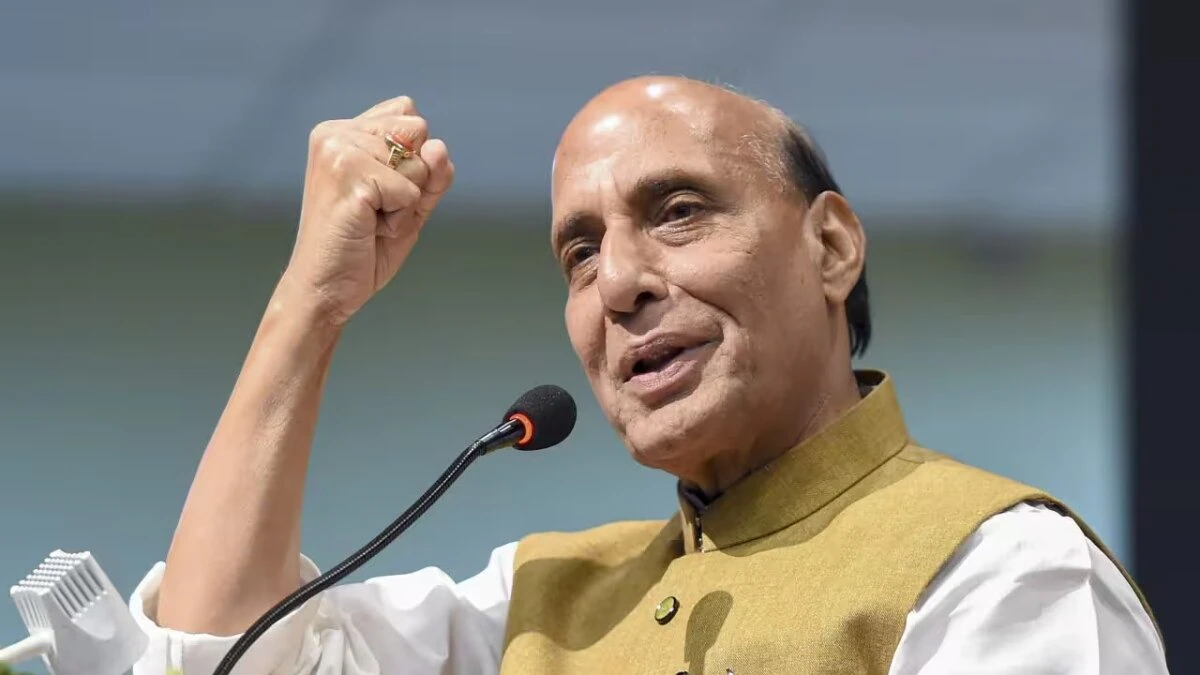Now Reading: Curtain Closes on an Era: Defence Minister Rajnath Singh Hails Decommissioned MiG-21 as ‘National Pride’
-
01
Curtain Closes on an Era: Defence Minister Rajnath Singh Hails Decommissioned MiG-21 as ‘National Pride’
Curtain Closes on an Era: Defence Minister Rajnath Singh Hails Decommissioned MiG-21 as ‘National Pride’

After six decades of iconic service, the Indian Air Force (IAF) officially bid a poignant farewell to its legendary Mikoyan-Gurevich MiG-21 fighter jets on Friday, marking the end of a defining chapter in India’s air power history. The final operational sortie, culminating in a grand decommissioning ceremony at the Chandigarh Air Force Station, was graced by Defence Minister Rajnath Singh, who described the warhorse as a “national pride.”
The MiG-21, a Soviet-origin supersonic jet, streaked through the Indian skies for the last time, with the final flight performed by jets of the No. 23 Squadron, aptly nicknamed “Panthers.” Air Chief Marshal A P Singh, along with other pilots, flew the final sorties in formations like the ‘Badal’ and ‘Panther’, a powerful symbol of passing the torch. The ceremony took place at the very base where the aircraft was first inducted in 1963, bringing its extraordinary journey full circle.
Addressing the gathering of veterans, service chiefs, and military personnel, Defence Minister Rajnath Singh delivered a powerful tribute to the aircraft. He stated, “The MiG-21 is not only an aircraft or a machine but a testimony to the deep attachment and confidence it has instilled in the nation. It is a mighty machine and a national pride.”
The Minister recalled the fighter jet’s unmatched contributions across several pivotal military operations, cementing its status as the ‘backbone’ of the IAF’s combat fleet for decades. The MiG-21 played a decisive role in the 1965 and 1971 wars with Pakistan, with its strategic bombing missions, including the attack on the Governor’s House in Dhaka during the 1971 war, helping shift the momentum. Its operational prowess was seen again during the 1999 Kargil conflict and, most recently, in the 2019 Balakot airstrikes, where a MiG-21 Bison successfully shot down a Pakistani F-16 fighter jet.
“This farewell,” Singh emphasized, “is also of our collective memories, of our national pride, and of that journey in which the story of courage, sacrifice, and excellence has been written.”
The elaborate farewell ceremony was a spectacle of military tradition and emotion. It included a majestic flypast by the MiG-21s alongside newer aircraft like the Jaguar and the indigenous Light Combat Aircraft (LCA) Tejas, symbolizing the transition to modern, domestically-produced platforms. The departing jets were accorded a traditional water cannon salute on their final taxi. In a poignant moment, Air Chief Marshal A P Singh handed over the aircraft’s Form 700 logbook to the Defence Minister, a customary gesture signifying the formal end of service.
Over 870 MiG-21s were inducted into the IAF since 1963, making it one of the most widely operated fighter aircraft in the force’s history. While its extended service has been a source of national pride, its ageing fleet and a history of crashes had often placed its safety record under intense scrutiny. However, the minister clarified that the aircraft being retired were modernised variants, many being around 40 years old, a normal lifespan for such jets globally.
As the roar of the MiG-21 fades into the past, the aircraft leaves behind an indelible legacy—a saga of speed, agility, and courage that has profoundly shaped the military aviation of India. Its retirement paves the way for the full integration of next-generation indigenous fighters like the LCA Tejas, ensuring the continued modernization and strength of the Indian Air Force.










